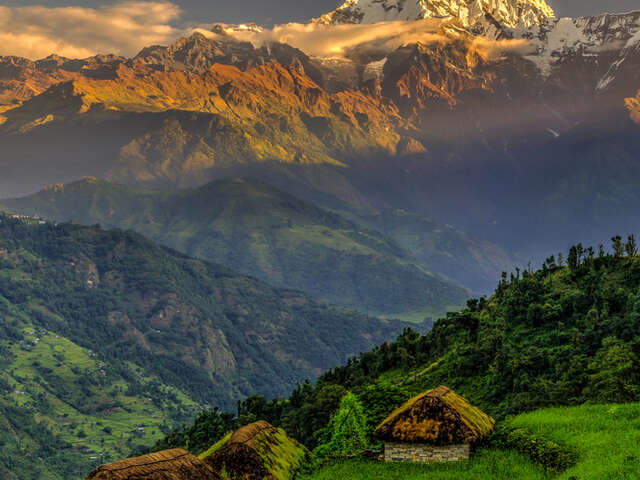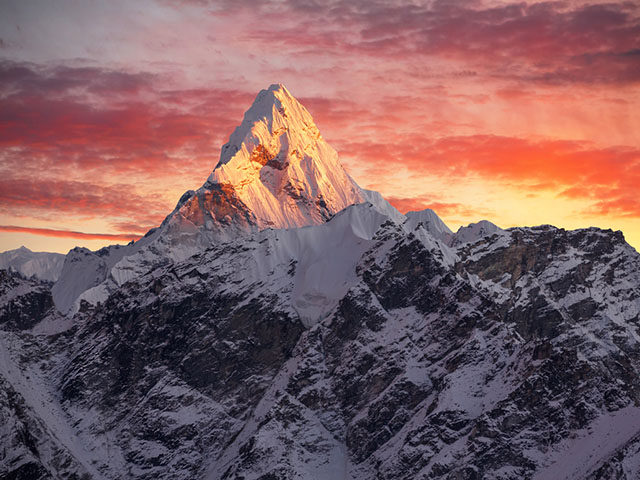Due to Nepal’s extreme geography, its biomes range from tropical to arctic with everything in between. This wild and biodiverse country has humid lowlands where one-horned rhinos and leopards meander and high cliffs where snow leopards and blue sheep leap from sheer face to sheer face. While on treks in Nepal it’s possible to see stunning animals found nowhere else in the world, such as red pandas and Himalayan butterflies. In the country’s national parks you can see rare river dolphins, bizarre looking crocodiles, and take jungle safaris to scout out tigers and leopards. Explore with us in this blog post some of Nepal’s most fantastic wildlife!
Animals of the Himalayas:

Red Pandas
Easily recognizable by their tear marked face, red pandas are easily one of Nepal’s most beautiful residents. Only found in the Eastern Himalayan Range, these unique animals spend most of their time in the treetops where they eat forest fruits, vegetables, grasses, and other vegetation. Walking the foothills of Nepal looking for this elusive and endangered animal is an experience like no other. This endangered species can be found in 5 distinct districts of Nepal and in the following parks: Langtang National Park, Annapurna Conservation Area, Sagarmatha National Park, Manaslu Conservation Area, Makalu Barun National Park and Kanchenjunga Conservation Area.
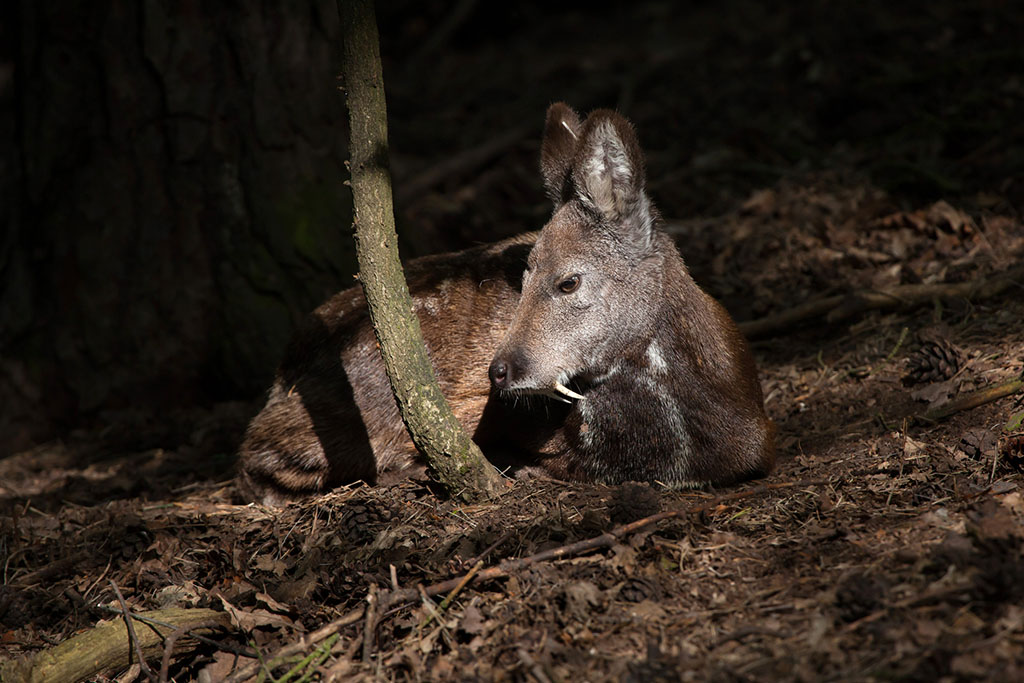
Musk Deer
Like most deer, musk deer are shy herbivores that eat leaves, grasses and flowers. What makes them a very interesting animal is that the males have large sabre-like fangs that they use to fight other males for the females. They also produce a musk scent that is highly sought after for traditional Chinese medicine and for making perfumes (due to the belief that it is an aphrodisiac). Due to their nocturnal nature these endangered deer are not easily spotted but they do live in Mustang and Manang, near the Annapurna Himalayas of Nepal.
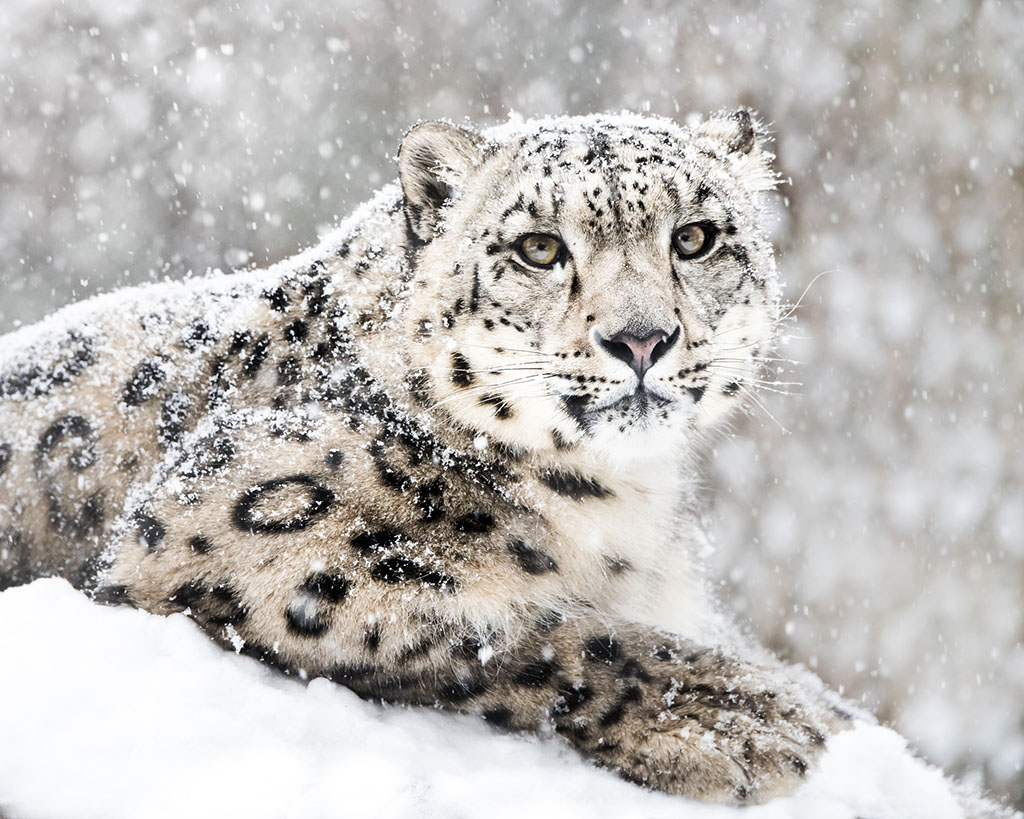
Snow Leopards
Nepal is one of 12 countries to have snow leopards and to the locals they are considered to be the pets of gods. The majestic cats are found in the harsh, rocky alpine of the Himalayas between 9,800 and 17,000 feet. There are an estimated 350-500 snow leopards in Nepal along the Northern range and in central Nepal. These ghosts of the mountains can live 15-18 years in the wild and prey on blue sheep and ibex. To try your luck at spotting this endangered species head to Manang, Langtang National Park, or Manaslu Conservation Area.
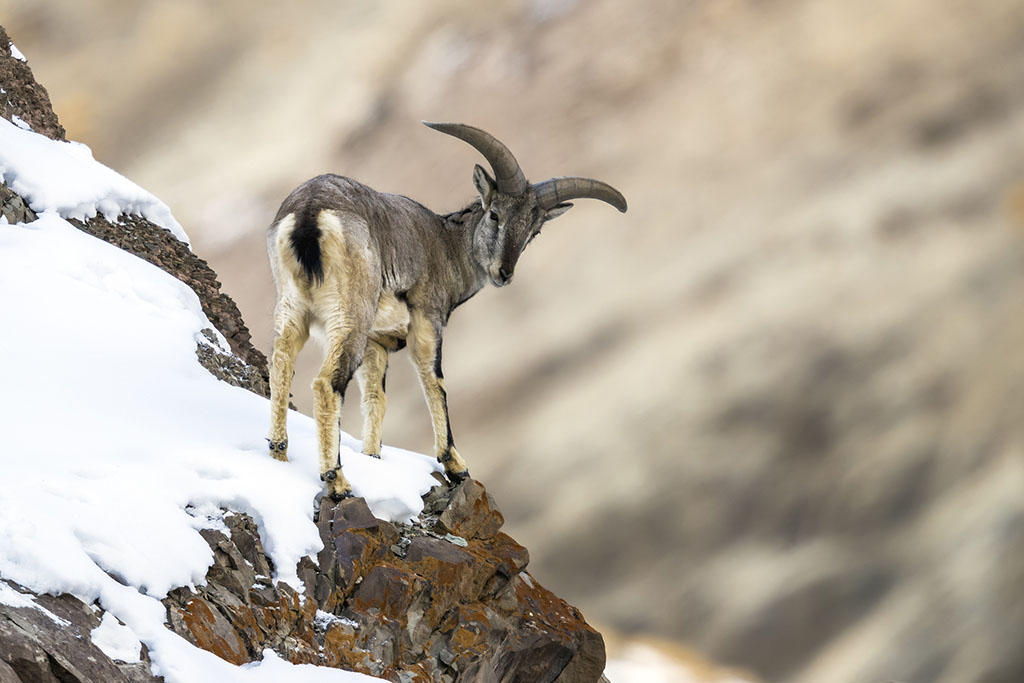
Blue Sheep
Blue sheep (bharals) are among the most commonly seen wildlife in the Himalayas often found foraging for herbs and mosses in the valleys of the Himalayas. Found up to 16,000 ft on alpine slopes, these “Mountain monarchs” are excellent climbers and escape predators by fleeing up the treeless cliffs. Blue Sheep is somewhat of a misnomer as they are more goat than sheep but their slate gray coat does have a blue-ish sheen. It is an excellent source of camouflage in this rocky, cliff environment especially when they are holding still. If you are lucky, you might spot them in a sizable herd of up to 200 sheep.
The Animals of the Terai Foothills and Jungles
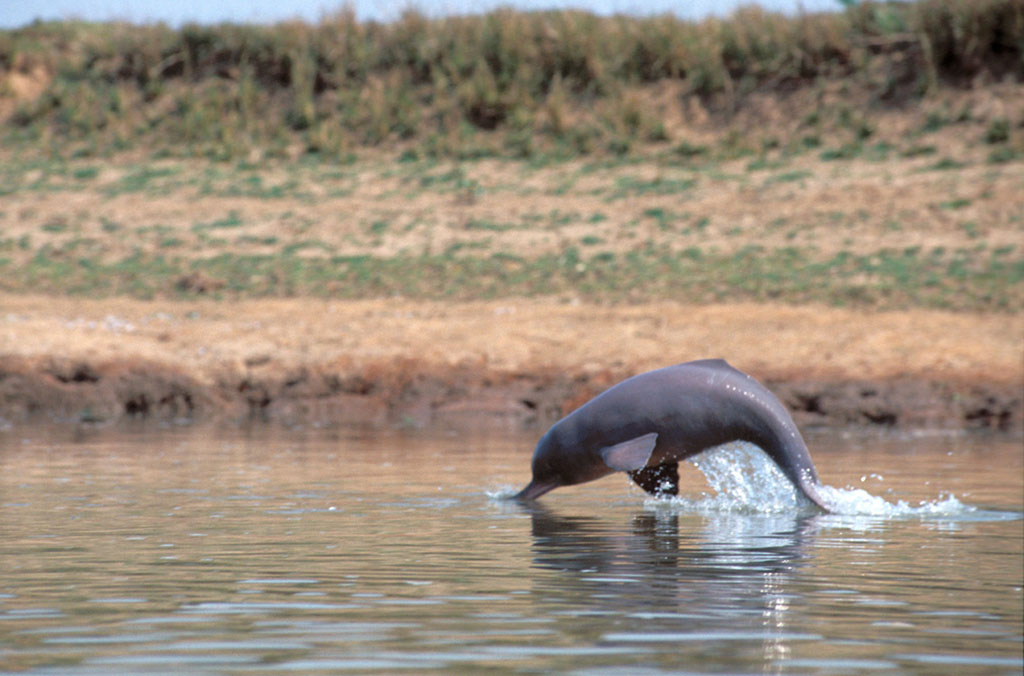
Ganges River Dolphins
It’s unlikely that you will have heard about these blind, freshwater dolphins before researching the animals of Nepal. Their populations have slowly been making a comeback in Nepal after a major decline due to habitat loss caused by humans, specifically the building of dams, and hunting. These playful animals use echolocation to navigate through rivers from India, coming to Nepal seasonally to raise their young in the safer, more shallow waters before returning after the monsoons end. These dolphins are incredibly agile hunters and can reach up to 8 feet long. If you’d like to see them, Tikapur/Bhajani (outside Bardia National Park) is the place to go. By supporting Nepal’s ecotourism, you can help ensure their future and protect the remaining dolphins.

Gharial Crocodiles
Nepal’s most interesting looking crocs live in the freshwater river system and only consume fish. These “modern dinosaurs” have bizarre snouts, powerful jaws and razor sharp teeth. Growing up to 15 ft long and weighing up to 550 lbs, it is certainly a thrill to canoe past these massive reptiles basking on the river shorelines. This endangered species is slowly regrowing its numbers (current count: 1300 individuals) with help to the gharial breeding centre in Kasara at Chitwan National park, where you can see the young reptiles released back into the wild after hatching. As Gharials reside in Terai areas like the east and west Rapti, and the Koshi and Narayani river systems you can also see them in Bardia National Park.
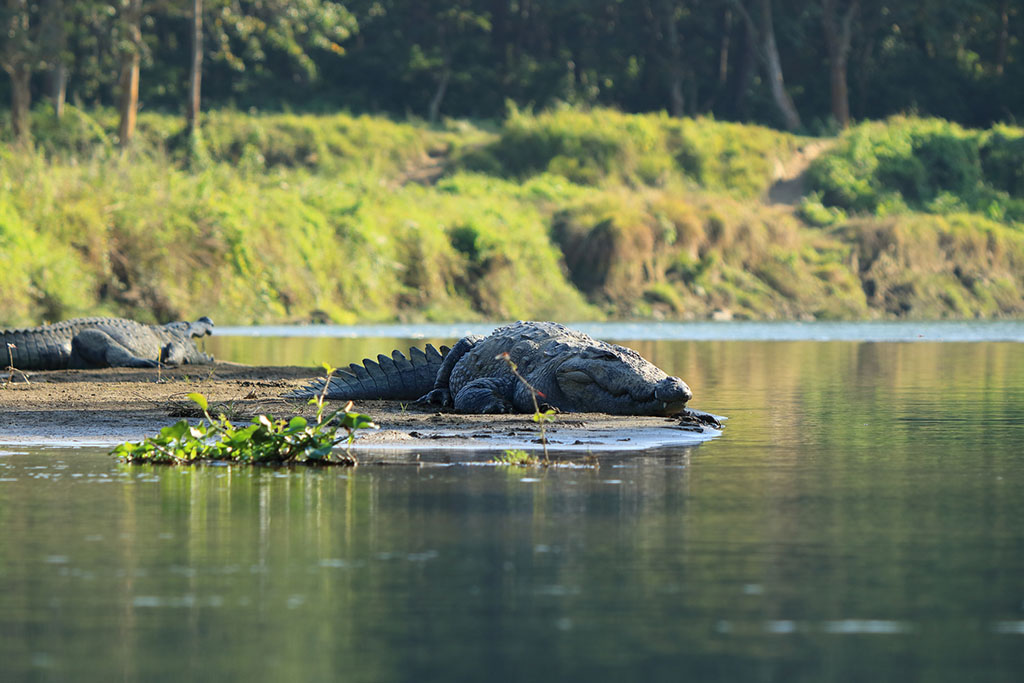
Mugger Crocodiles
Mugger crocodiles are among the biggest crocodile species and can be found in southern Iran, Pakistan, Nepal, India and Sri Lanka. This critically endangered species can be found in lakes, rivers and marshes of the Terai lowlands, and prefers slow-moving, shallow water bodies. They are heavily armored and experts at camouflaging in murky river waters. Solidifying their position as apex predators is that these massive beasts (up to 600 lbs) are omnivores that will eat anything that comes their direction.
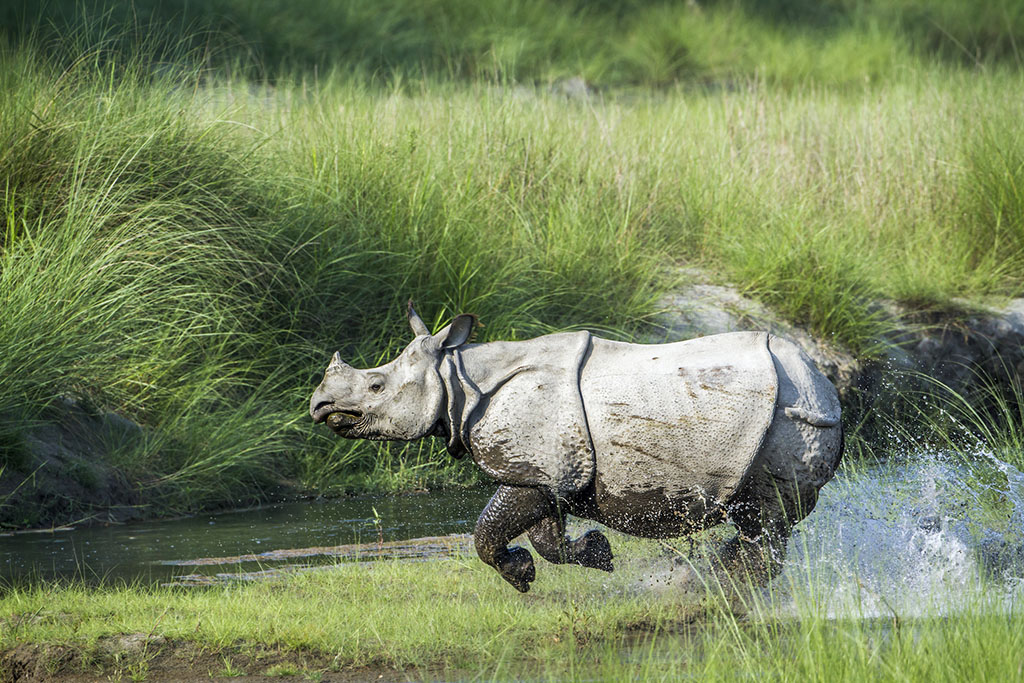
One Horned Rhino
One of the greatest conservation successes in Asia has been Nepal’s endeavor to bring back its One Horned Rhino population. It is the biggest rhinoceros species, easily identified by its singular black horn. The population in Chitwan National Park is currently over 600 rhinos, brought back from the brink of extinction when the population dipped below 100 individuals due to sport and agricultural defense hunting in the 1970’s. With zero poaching over the last few years, the population is thriving. These high profile, armor plated animals are semiaquatic and prefer to live in moist or marshy areas . The Terai grasslands, known as the “rhino kingdom”, in Southern Nepal has over 90% of Nepal’s rhino population and is the best place to see them.
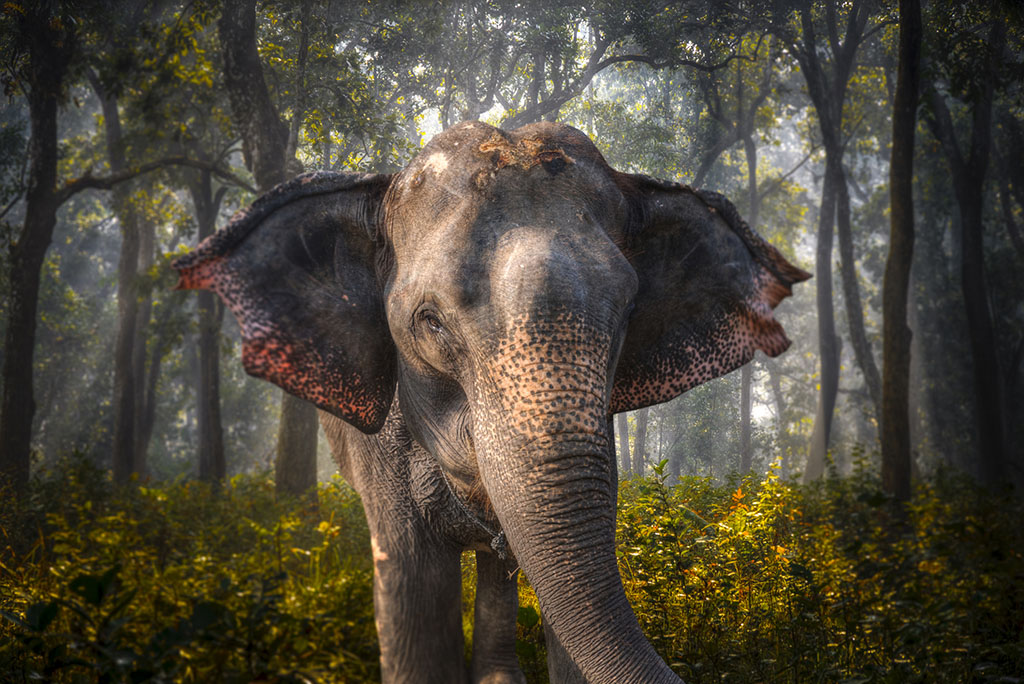
Asian Elephants
Nepal’s largest mammal is the Asian elephant. These highly intelligent beings have complex social structures and the capacity to feel emotions ranging from grief to compassion. In the 1960’s the populations were healthy but with increased deforestation and habitat loss they have gone down significantly. Today, 100-140 wild elephants can be found in Nepal across several different regions. Reaching 9 ft in height and 19 in length, it’s no surprise that they spend ⅔ of their day eating. One of the best places to see them is Bardia National Park, where a significant population increase has been recorded rising from 25 elephants in the early 90’s to over 50 individuals a decade later.
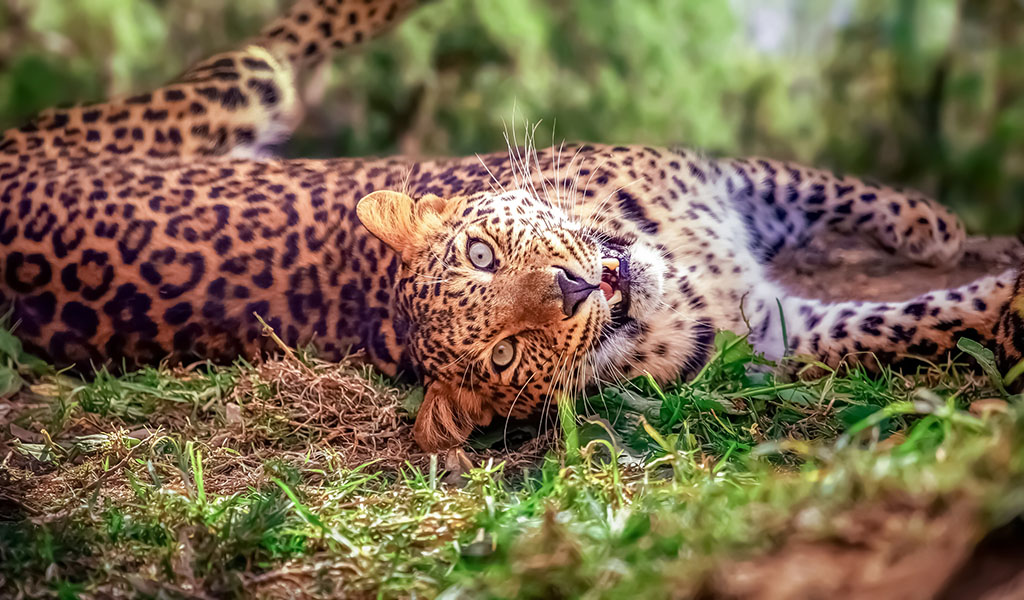
Indian Leopards
One of the 4 big cats in Nepal is the spotted Indian leopard (the others being the snow leopard, the clouded leopard, and the bengal tiger). They are nocturnal cats, excellent at stalking prey and making kills with impressive strength. They are so strong they are capable of killing prey 10x’s their size and then can haul the carcass up a tree to dine and then store for later. Weighing from 30-70 kg, they can be up to 5 ft long, each with a distinctive pattern of rosettes. They live from 12-17 years old and can hear 5x’s better than humans. With patience they can be found in the national parks of Bardia and Chitwan.
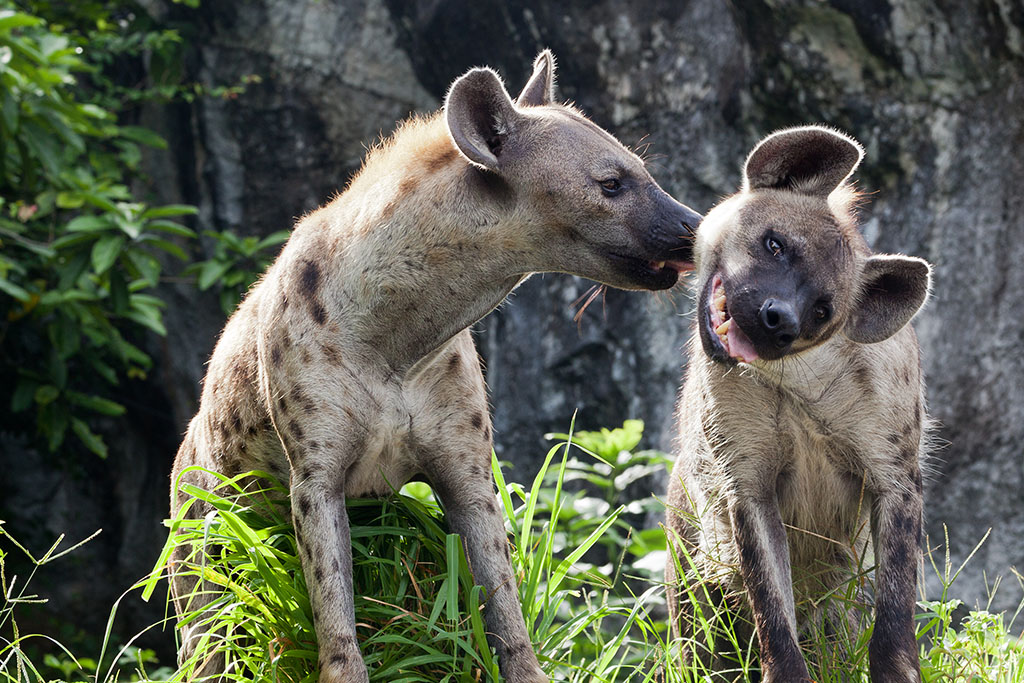
Striped Hyena
Striped hyenas are an endangered species in Nepal and one of the least studied big mammals in the country. They are nocturnal mammals that live in the lowlands forests and natural grasslands of Terai. They are stealthy scavengers, well camouflaged in the tall long grasses by their coats. Much like a cat, hyenas can make themselves appear larger when threatened by raising the hair along their backs but they are not aggressive as people largely misunderstand them to be. There are only an estimated 100 striped hyenas in the country but with the right guides they can be found in Chitwan National Park.

Pangolins
If you’ve never heard of this scaly ant and termite eater then give him a quick google! It is the only mammal that is covered in scales, which account for about 20% of their body weight and slows them down considerably. They are nocturnal animals with large claws for burrowing and digging for insects. The forests depend on them to aerate the soil and keep the insects in check. The numbers show that one pangolin can eat up to 70 million insects per year, making them an ecologically invaluable asset. However, this critically endangered animal is the world’s most trafficked because it’s prized by traditional Chinese medicine workers for its scales. If you’d like to see one, your best odds would be to head to Chitwan National Park or the Annapurna Conservation Area.
You can support the pangolin’s cause by raising awareness and supporting ecological conservation in Nepal.

Honey Badgers
A strong, fierce and tenacious animal, the honey badger is not as nearly sweet as its name. They are known as some of the most quarrelsome animals and will fight nearly any animal for resources including lions and leopards. Honey Badgers are omnivores that will eat most things; primarily small reptiles, mammals, birds, fruits and vegetables. In Nepal, they can be found burrowing in Deukhuri Valley, Dang District, and Province 5.
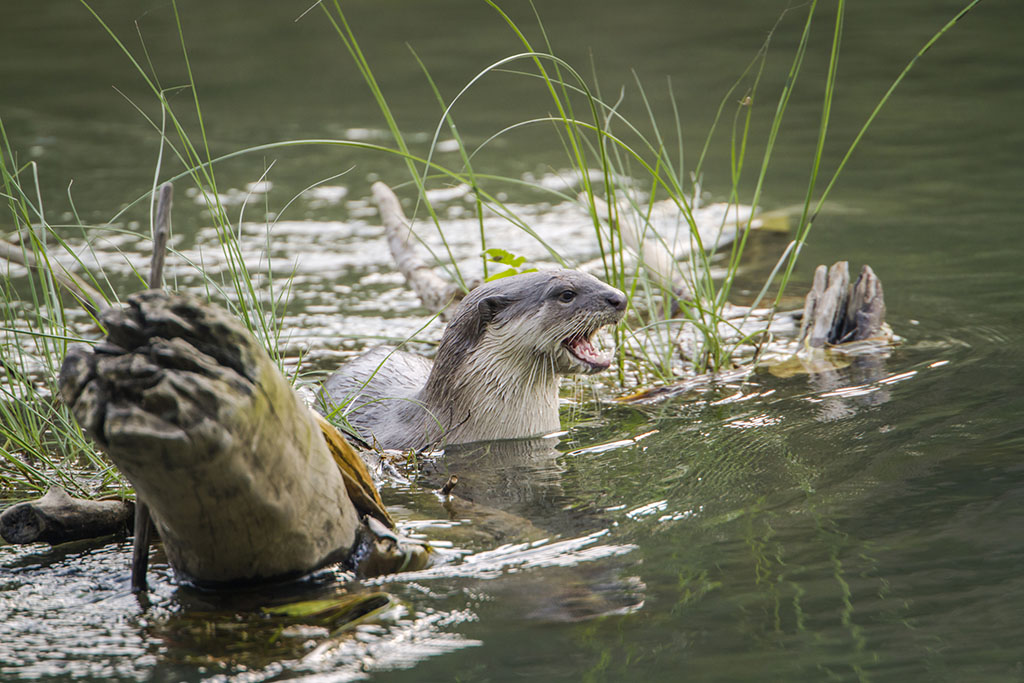
Otters
Nepal’s freshwater ecosystems support three different species of these small semi aquatic mammals. Their graceful, elongated bodies and their webbed paws make them elegant swimmers. They enjoy raising their young and floating through the marshes and reeds of the Babai river in Bardia National Park. They also live in estuaries and rice paddies as long as there are enough fish, amphibians, crustaceans and reptiles to support them. Nepal’s otters are found in Terai, Rara region north west, Annapurna Conservation Area, and outside of Pokhara.
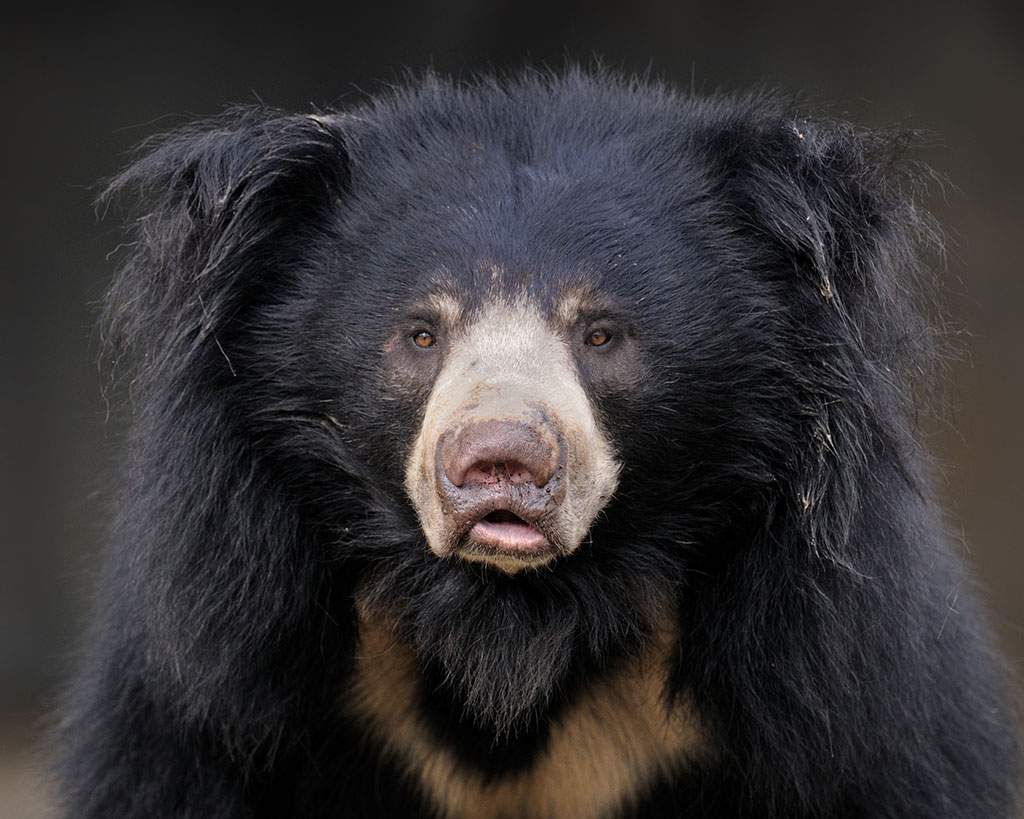
Sloth Bears
Roughly the size of a large dog, these shaggy black bears are insectivores, spending most of their time eating termites and ants, honeybee colonies, and seasonal fruit. Only found in three countries -India, Nepal and Sri Lanka, their status is listed as vulnerable. They prefer dry forests and can be found in the forests and grasslands (like Chitwan National Park). While harvesting termites, their sucking noises can be heard from over 300 feet away. Unlike their name suggests, sloth bears can be very fast and aggressive, especially when surprised. As with all other wild animals, be sure to keep your distance when observing them in the national parks.

Bengal Tigers
The most feared, intelligent and powerful cat in the jungle is none other than the Bengal Tiger. These massive cats are up to 3 meters long and weigh 250 kg, eating a diet primarily made up of swamp deer and wild boars. Of the 235 tigers in the country, roughly half of which can be found in Chitwan National Park. Nepal is currently on track to be the first country, of the 13 where tigers reside, to double its endangered tiger population by 2022, which has drawn wildlife enthusiasts from far and wide with the increasing possibility of spotting one. By offering the big cats extra space away from human settlements, ensuring their protection from habitat loss and human poaching a new generation of healthy cubs has been born.
If you are on an expedition to see tigers then make sure not to wear any perfume, deodorant or cologne as the tigers will stay clear of any chemical smells.
Whether you’re interested in exploring the Terai lowlands at the base of the Himalayas to see Asian elephants, sloth bears, and greater one-horned rhinoceros, or want to hike to the rocky alpines to see red pandas, blue sheep, and snow leopards, it can be said without a doubt that Nepal has some incredible fauna to discover. We also hope that this article has also shed some light on how much these unique species need our help to survive.






